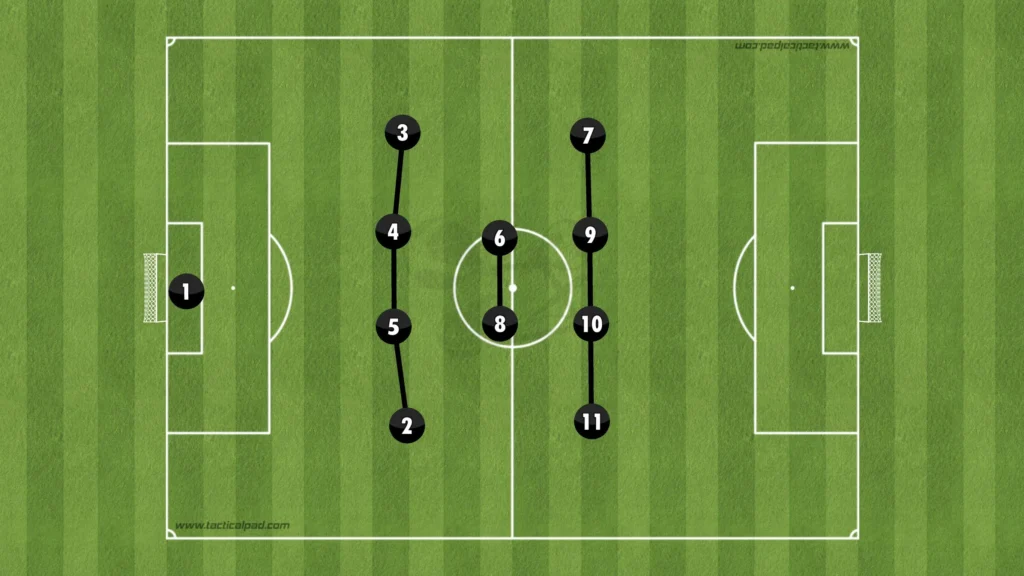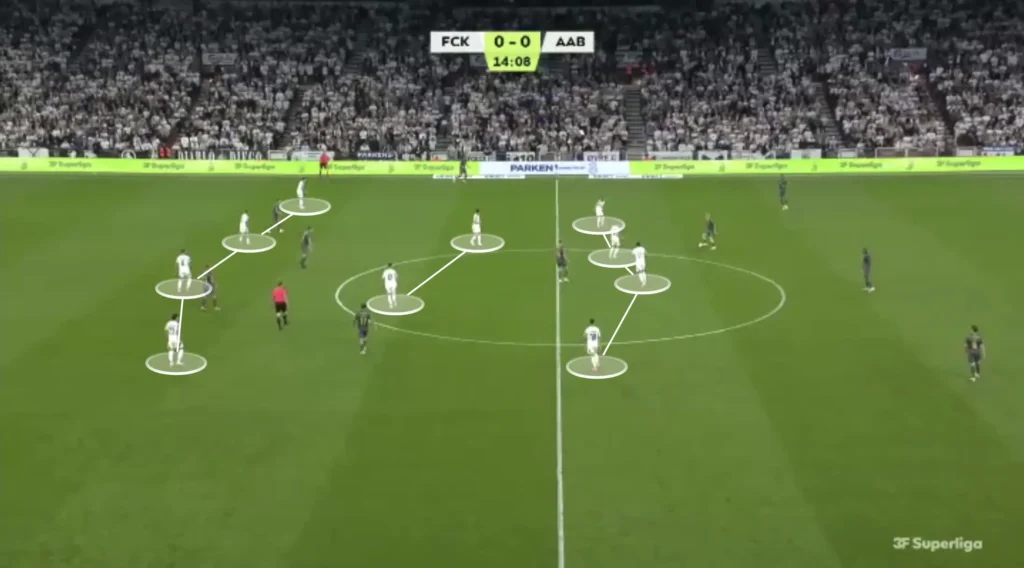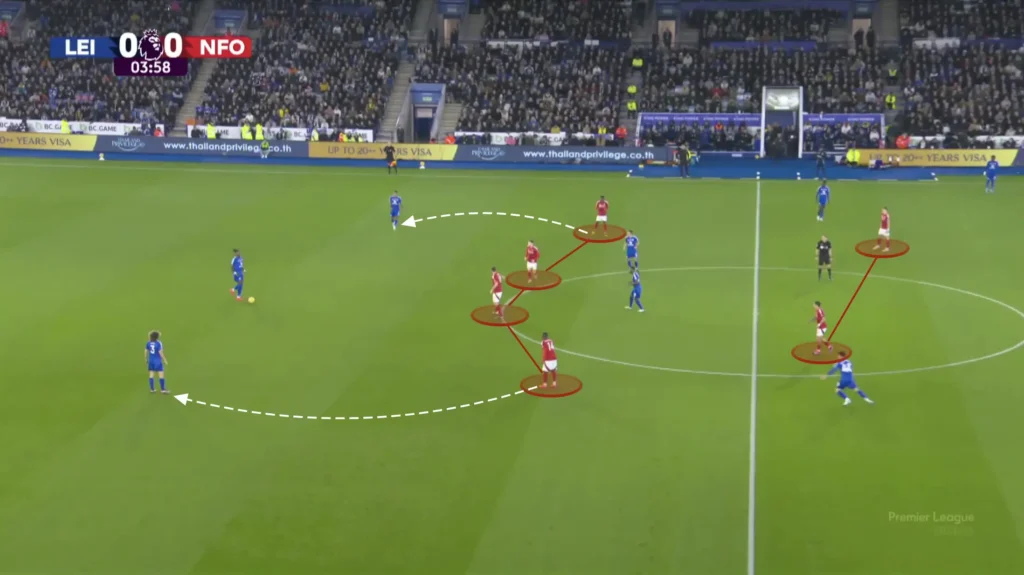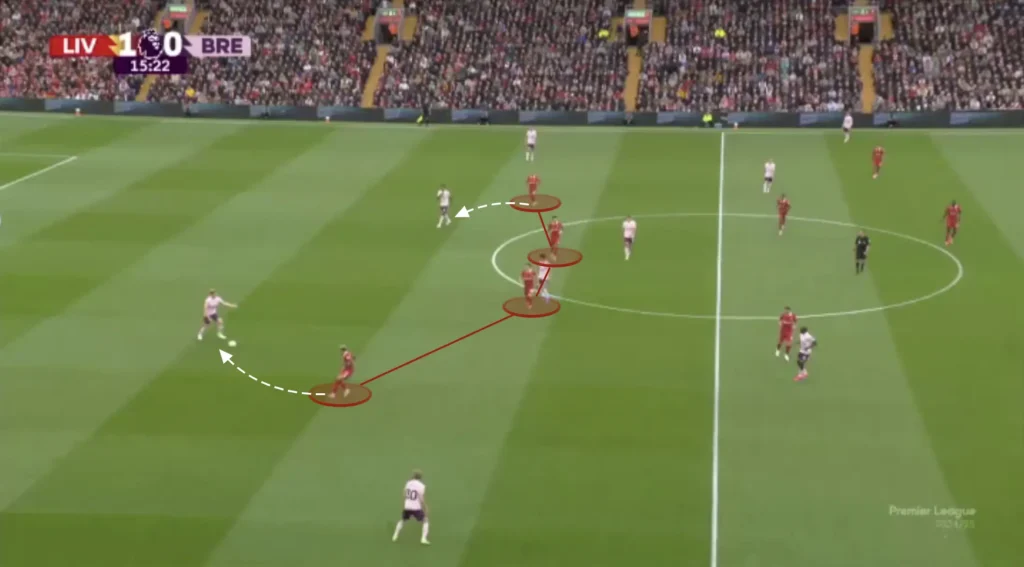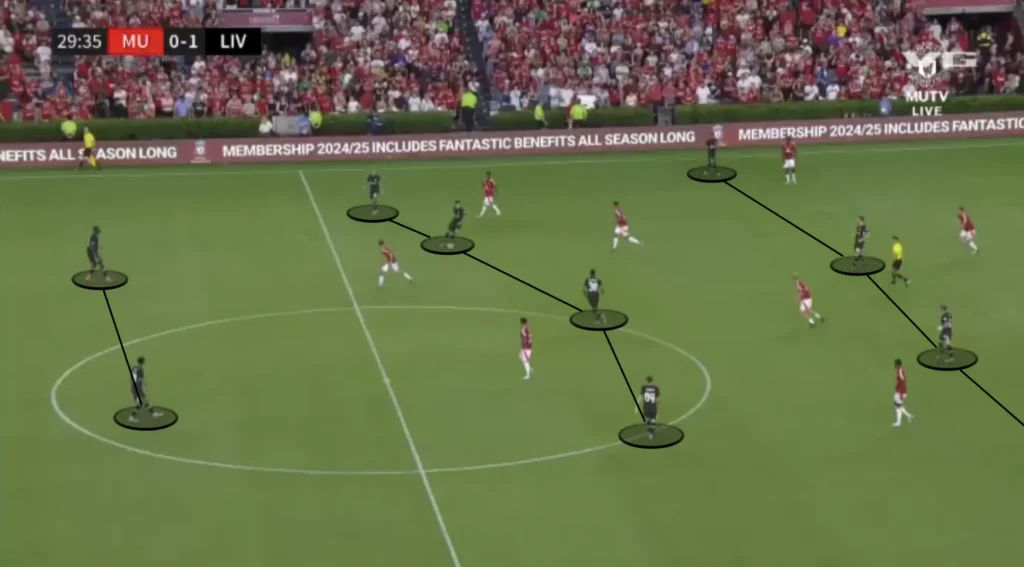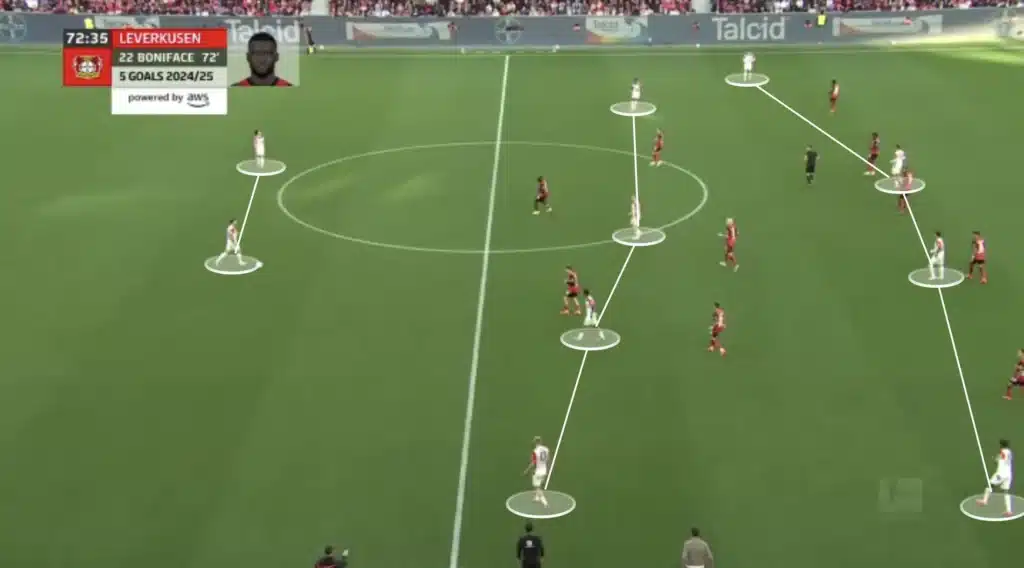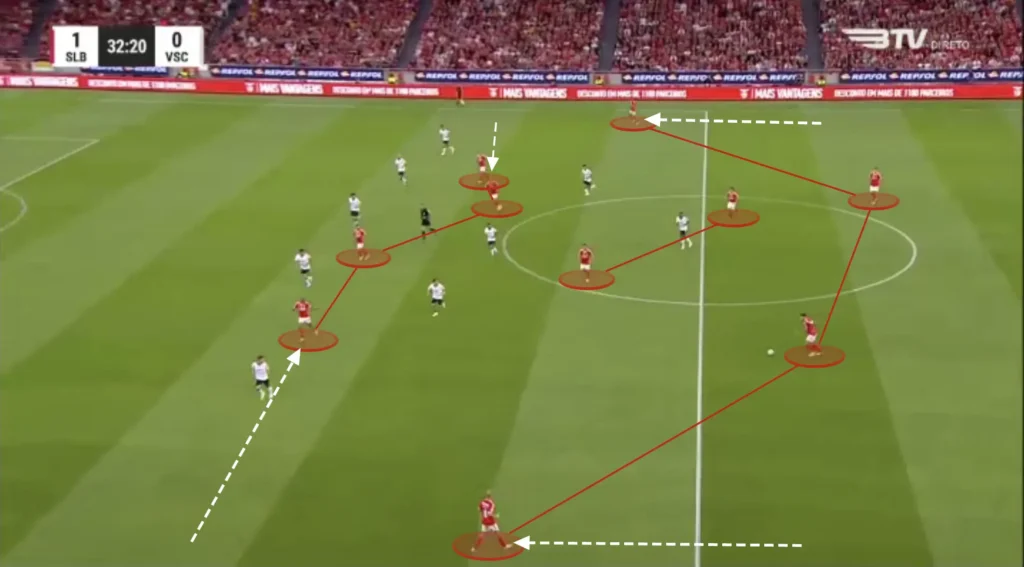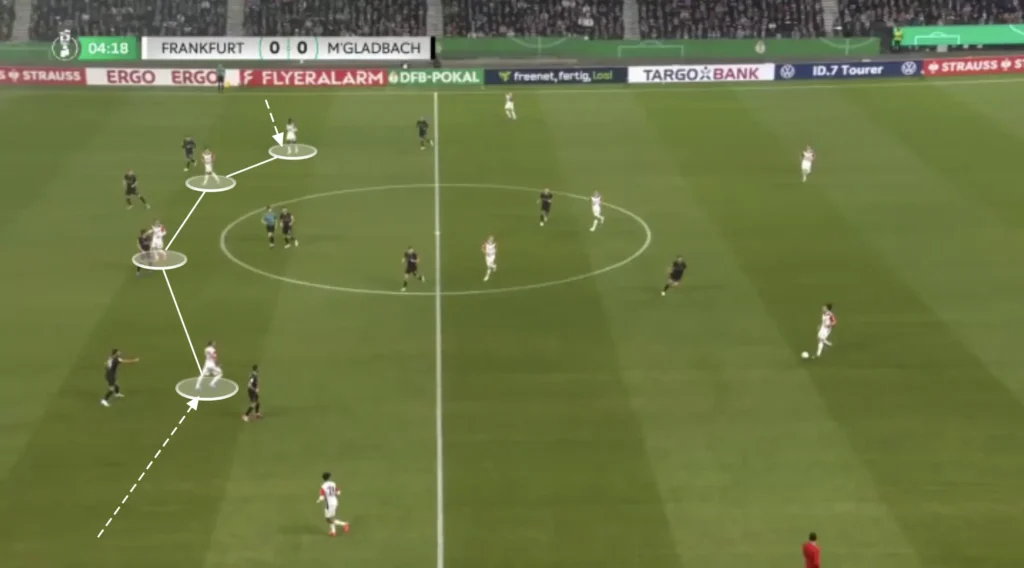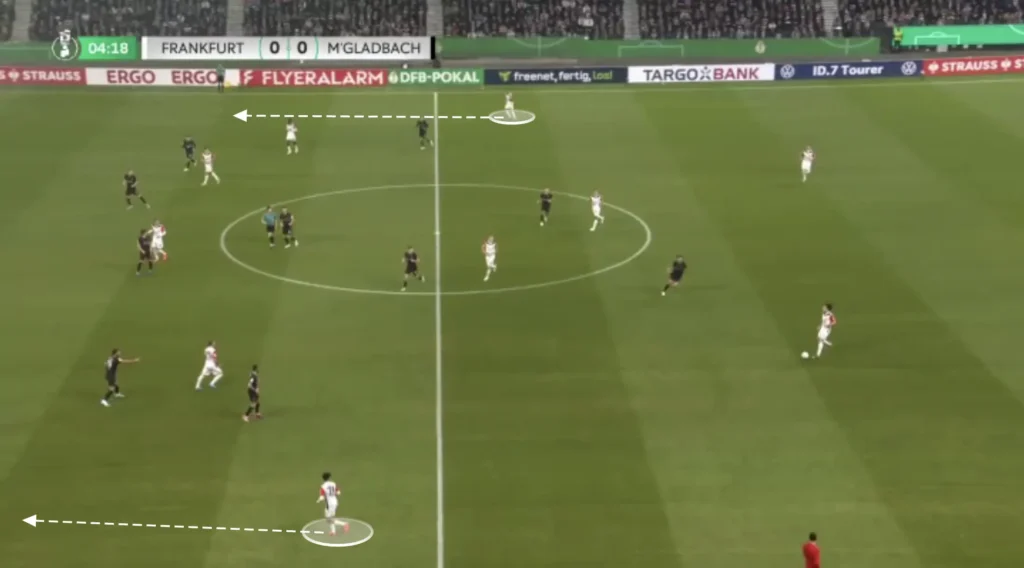Formations are the foundation of every football team’s strategy, shaping how players move, defend, and attack. One of the most iconic and bold setups in football history is the 1-4-2-4 formation. Known for its attacking intent and focus on scoring goals, this formation was popularized in the mid-20th century and has left a lasting legacy in the game.
In this article, we’ll break down the 1-4-2-4 formation, explaining its structure, strengths, and challenges. From its emphasis on wide play to its vulnerability in defense, this guide will give you a complete understanding of how this formation works and why it’s both exciting and demanding on the pitch.
Defending in the 1-4-2-4 formation
Defending in a 1-4-2-4 formation requires a careful balance between pressing high and maintaining defensive solidity. The two central midfielders play a crucial role, acting as the primary shield in front of the back four while also supporting the press when the team looks to regain possession. The front four must press aggressively, cutting off passing lanes and forcing the opposition into mistakes. The back four stays compact, with fullbacks responsible for covering wide areas while center-backs maintain a solid shape. Overall, the success of defending in this formation hinges on coordinated pressing, quick transitions, and disciplined positioning to avoid being exposed in central areas.
Pressing Wingers, Forcing the Opposition into the Middle
In this formation, the wingers play a crucial role by pressing the opposition center-backs, cutting off the passing lanes to the fullbacks or wingbacks. By doing this, the defending team forces the ball into central areas, where they can regain possession. The wingers must maintain intensity and positional awareness, ensuring that the press remains effective without leaving gaps.
The strikers complement this effort by covering the opposition’s holding midfielders. They position themselves to block passing lanes into the midfield, creating a barrier that limits the opponent’s options. This setup helps isolate the center-backs and increases the chances of forcing a mistake or a long ball.
Behind the front four, the two central midfielders form a protective shield for the defensive line. They track runners from deep and intercept passes that break through the first line of press. Their discipline is vital for preventing the opposition from exploiting spaces between the lines.
This defensive structure relies on teamwork, discipline, and high energy levels. When executed correctly, the 1-4-2-4 defensive system can suffocate the opposition’s build-up, leading to quick transitions and counterattacking opportunities. However, it requires careful coordination, as any breakdown in pressing or positional discipline can leave the team vulnerable, especially in wide areas or when the opposition bypasses the first line of pressure.
Potential Problems When the Opposition Finds the Fullback
One of the key challenges of the 1-4-2-4 defensive formation is dealing with situations where the opposition successfully bypasses the press and gets the ball to a fullback or wingback. This can expose weaknesses in the defensive structure, particularly in wide areas.
When the ball reaches a fullback, the pressing winger is often caught out of position, as they were initially focused on pressing the center-back and cutting off passing lanes. This leaves the fullback with time and space to progress the ball, either by dribbling forward or playing a pass down the flank. If the defending team’s strikers and midfielders cannot shift quickly enough to cover, the opposition can exploit this advantage to create dangerous attacking opportunities.
Problems in Wide Areas
- Space on the Flanks
Since the fullbacks are often unmarked when the ball bypasses the press, they have the freedom to exploit the space in wide areas. This can lead to overlapping runs, crosses, or quick combinations that stretch the defensive line. - Midfield Overload
The defending team’s central midfielders are focused on protecting the middle of the pitch and tracking runners. If the ball moves wide, they are forced to shift laterally to help close down the fullback. This movement can open gaps in the center, allowing the opposition to quickly switch play or exploit spaces between the lines. - Pulling the Defensive Line Apart
If the opposition fullback progresses the ball further up the field, the defending team’s backline must decide whether to push out wide to confront them or stay compact in the center. Either decision can create vulnerabilities:
- Pushing wide risks leaving gaps in the middle for diagonal balls or late runs into the box.
- Staying compact allows the opposition fullback time to deliver dangerous crosses into the area.
Counteracting This Problem
To mitigate these issues, the defending team must react swiftly and cohesively:
- The central midfielders must provide support to the winger by shifting wide to close down the fullback.
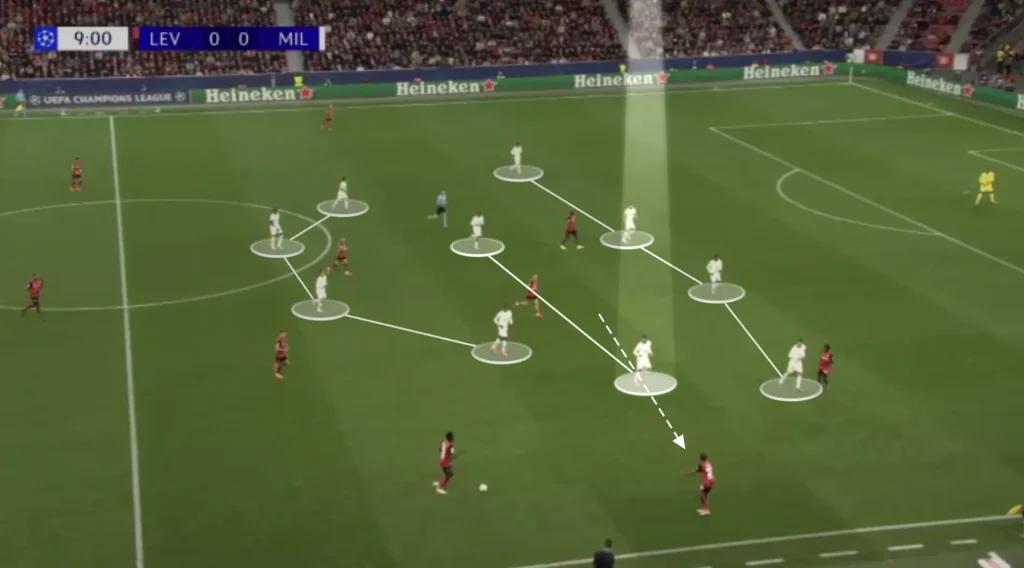
- The beaten winger must track back and put pressure on the fullback from behind.
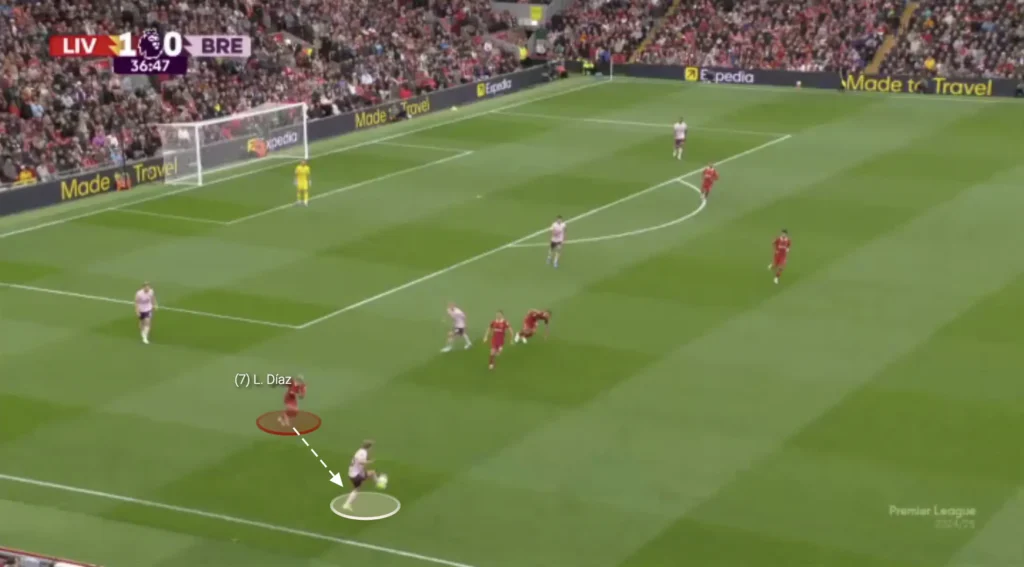
- The backline must communicate effectively, ensuring that any gaps created by shifting are quickly filled by other defenders.
- The far-side winger and fullback must track back diligently to maintain defensive balance and prevent overloads in wide areas.
While the 1-4-2-4 defensive system emphasizes high pressing and aggressive positioning, its success relies heavily on the team’s ability to adapt when the opposition finds ways to bypass the press. Addressing these vulnerabilities requires discipline, quick transitions, and an understanding of defensive roles.
Counterattacking in the 1-4-2-4 Formation
The 1-4-2-4 formation is ideal for quick and devastating counterattacks. With four advanced attacking players and two midfielders who can act as a bridge between defense and attack, this setup allows teams to transition rapidly after regaining possession.
Exploiting Wide Areas
In counterattacking situations, the wingers play a crucial role. Positioned high and wide, they are immediately available to receive long balls or diagonal passes from defenders or midfielders. Their ability to stretch the field and exploit spaces left by opposition fullbacks creates opportunities to drive forward at pace.
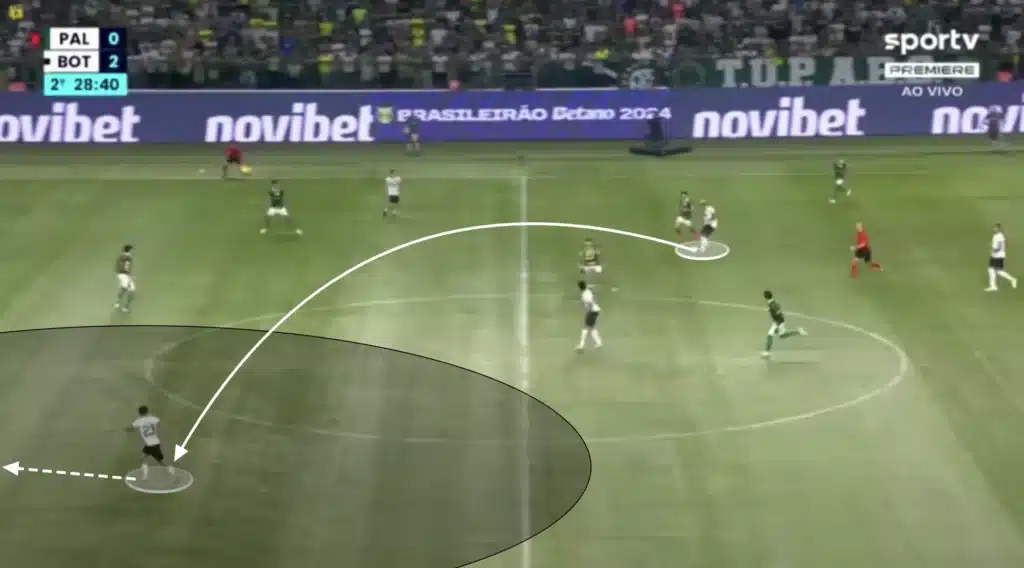
Overloading the Opposition Defense
The presence of two strikers in the 1-4-2-4 allows for immediate central threats during transitions. While the wingers push up, the two strikers can position themselves to receive through balls or drag defenders out of position. This creates confusion for the opposition, often leading to numerical superiorities in attacking areas.
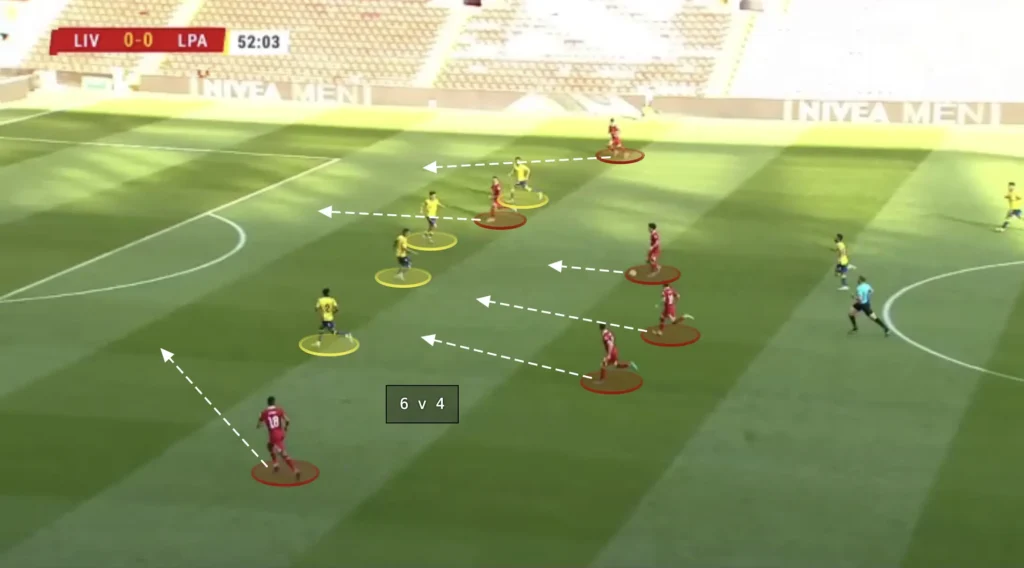
Support from Midfield
The two central midfielders in the 1-4-2-4 must balance their defensive duties with their ability to launch counterattacks. A quick recovery and a well-timed forward pass from the midfield are critical. These players need vision and precision to initiate counters by finding wingers or strikers in advanced positions.
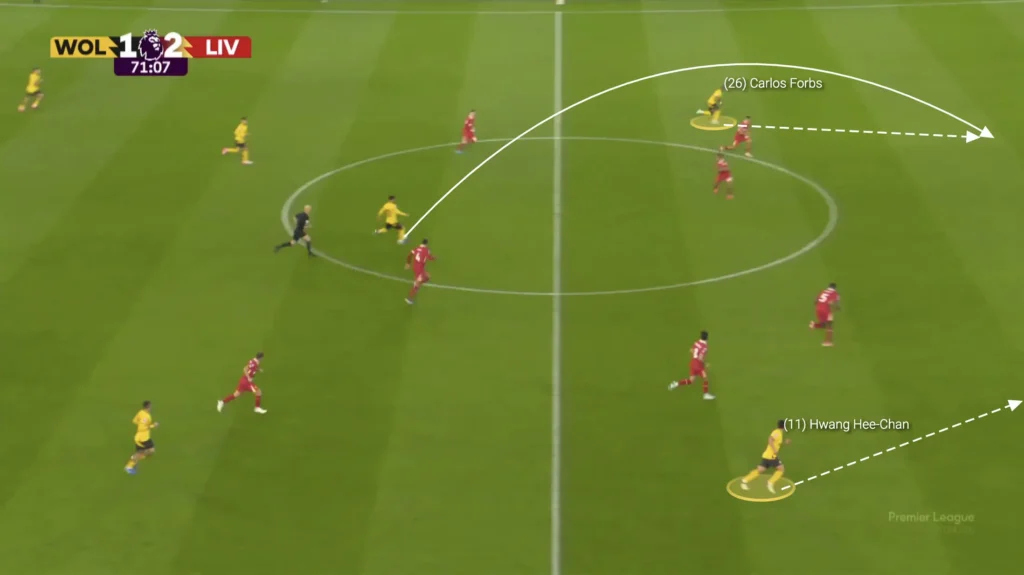
When executed well, counterattacking in the 1-4-2-4 formation can overwhelm even the most organized defenses, capitalizing on the opposition’s vulnerabilities during their attacking transitions.
Build-up
In the 1-4-2-4 formation, building up from the back is a crucial aspect of the team’s offensive strategy. The two central defenders work to progress the ball by either playing short passes between themselves or looking to distribute the ball to the fullbacks or central midfielders. The two central midfielders act as the first line of support, offering passing options and helping to maintain possession. As the ball moves forward, the fullbacks often push up the pitch, providing width and stretching the opposition’s defense. The wingers also play a key role in the build-up, staying wide to stretch the opposition’s backline or coming into the center to create numerical superiorities in the midfield areas. Although the two strikers are positioned higher up the pitch, they remain involved in the build-up by making runs to drag defenders out of position and create space for the midfielders to exploit.
The goal of building up in this system is to use quick, fluid passing and positional rotations to move the ball into advanced areas, eventually setting up goal-scoring opportunities.
Low Build-up
The 1-4-2-4 formation is becoming more and more popular in the low build-up. If the strikers play high and the wingers wide, a big space between the opposition’s backline and midfield will appear. The attackers can drop into this space and receive the ball from the backline, looking to play it back to one of the holding midfielders and go at the opposition from there.
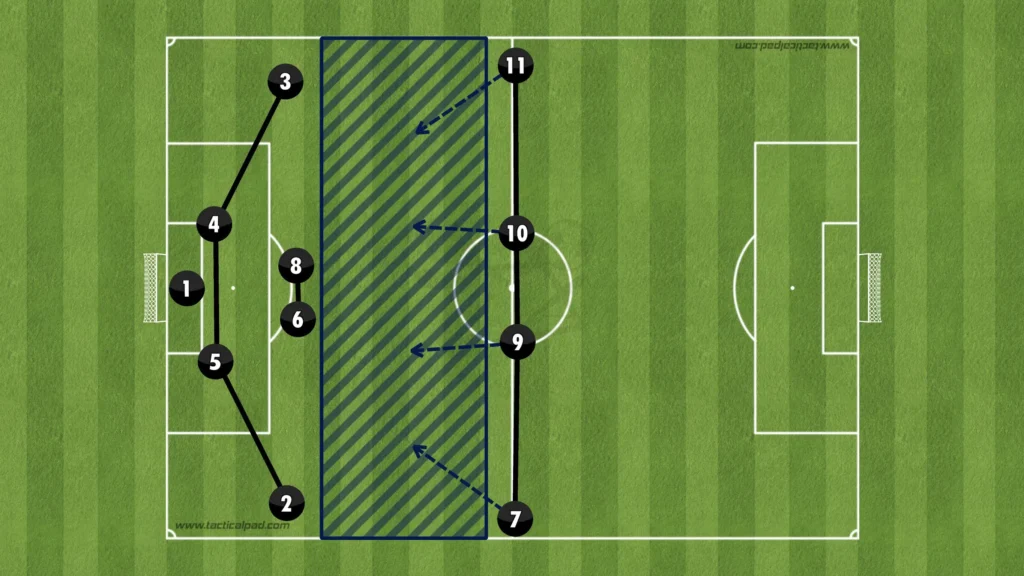
Low build-up vs 1-4-3-3 press
If the opposition comes up and presses in a 1-4-3-3 formation, there will be a numerical disadvantage up top but a numerical advantage at the back. The goalkeeper and center-backs can create a 3v1 against the opposition striker and use that numerical advantage to find a free center-back who can take the ball forward past the striker.
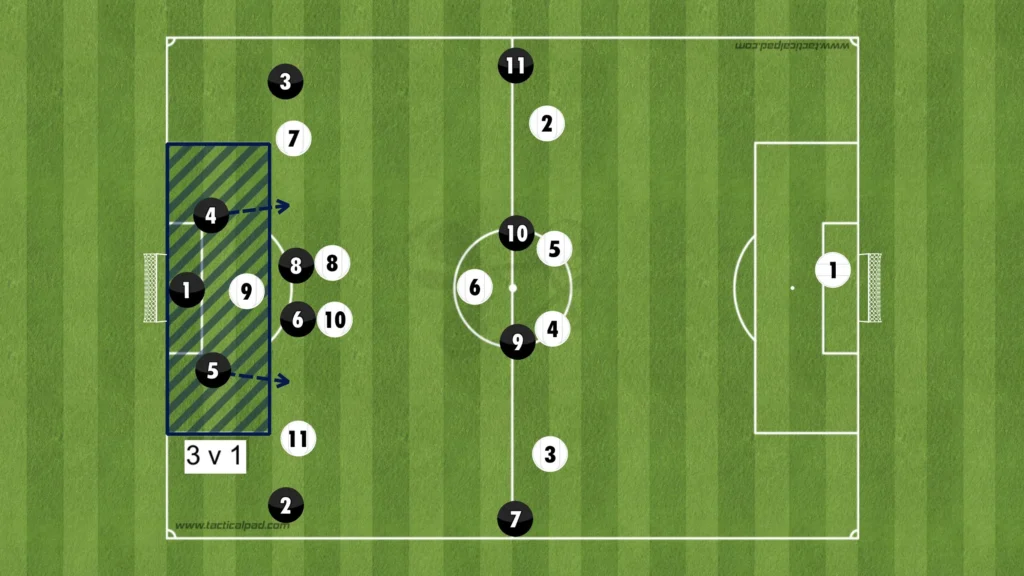
From there, the center-back will attract the press from a new opponent, which opens the space for a teammate. If the opposition winger pushes up to press the center-back, the fullback will be open, and a third-man combination involving a dropping striker could be used to find him.
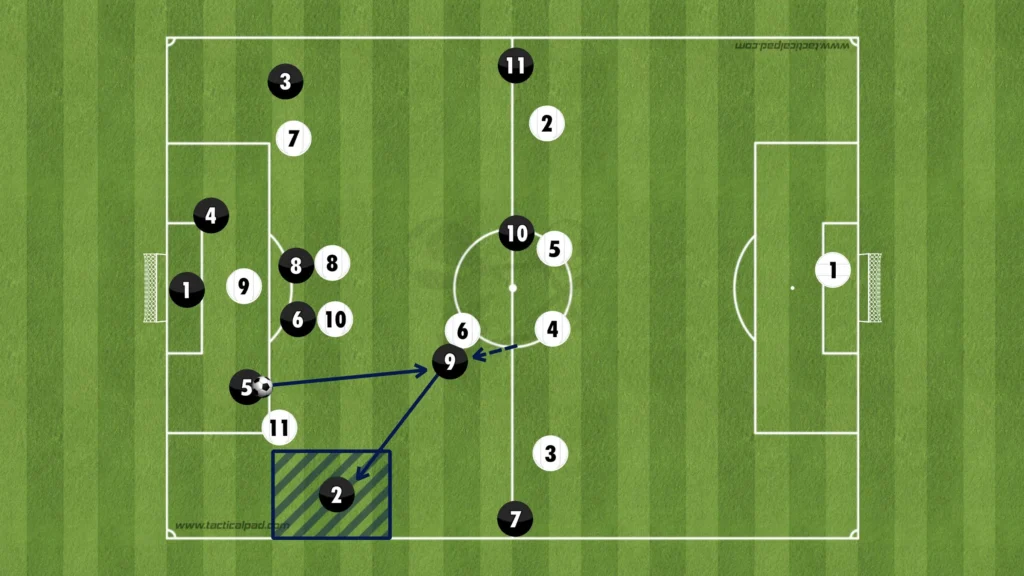
If an opposition attacking midfielder pushes up to press, a holding midfielder will be open, and the striker could again drop and be used as the third-man to find the free player.
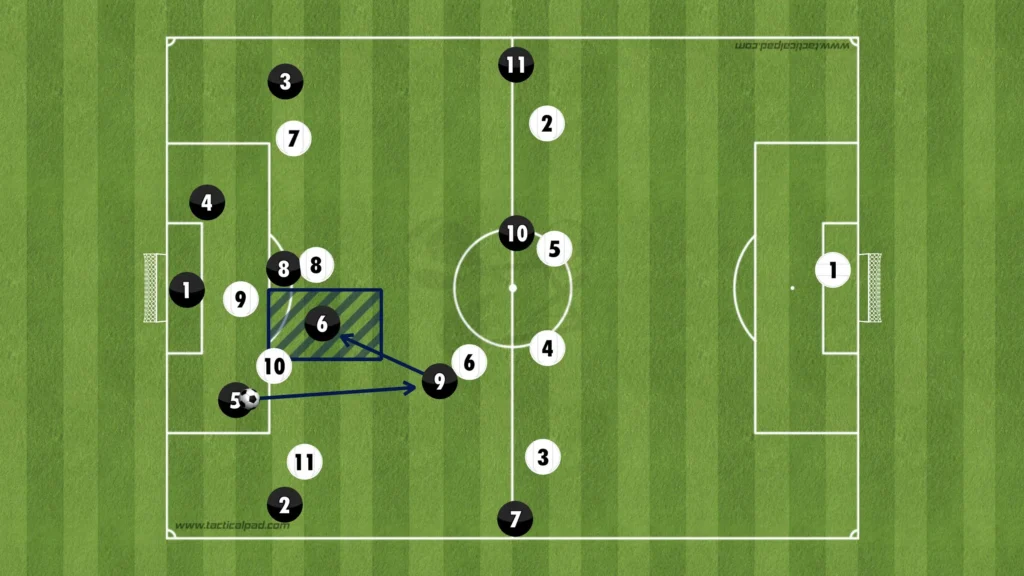
Low build-up vs man-to-man system (numerical equality)
If the opposition comes up and presses man-to-man, there will be numerical equality all over the pitch. The only place where a numerical advantage could be made is in your own penalty area with the goalkeeper and center-backs against the opposition strikers.
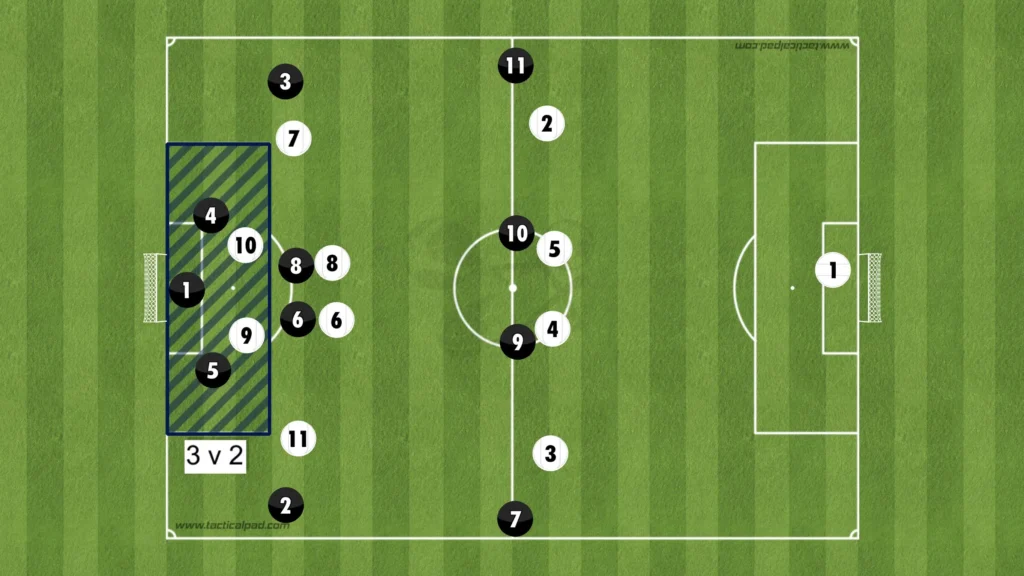
This 3v2 can be exploited to find a free center-back who can take the ball forward. Firstly, the center-back can play the ball to the goalkeeper who waits for one of the strikers to press him. This means the center-back the striker was marking will be free. The pressing striker will block the passing lane from the goalkeeper to the center-back, which means a third-man has to come and connect. The goalkeeper can play the ball to one of the holding midfielders, who can play a one-touch pass to the open center-back, beating the striker’s press.
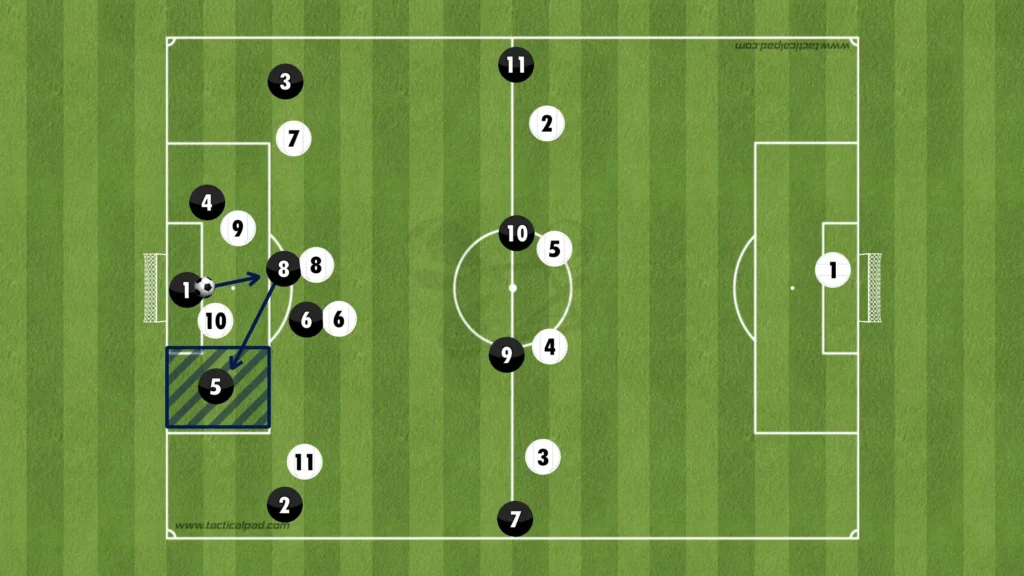
From there, the center-back can take the ball forward and attract the press from a new opponent, which opens the space for a teammate. If the opposition winger pushes up to press the center-back, a third-man combination involving the dropping striker could be used to find the open fullback. If the opposition attacking midfielder pushes up to press, the striker could be used as the third-man to find the free holding midfielder.
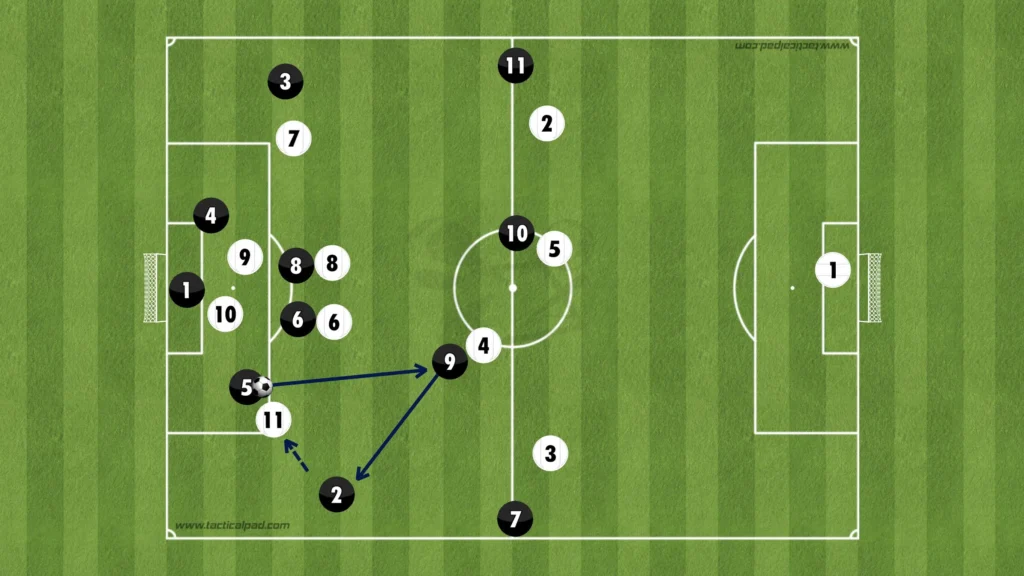
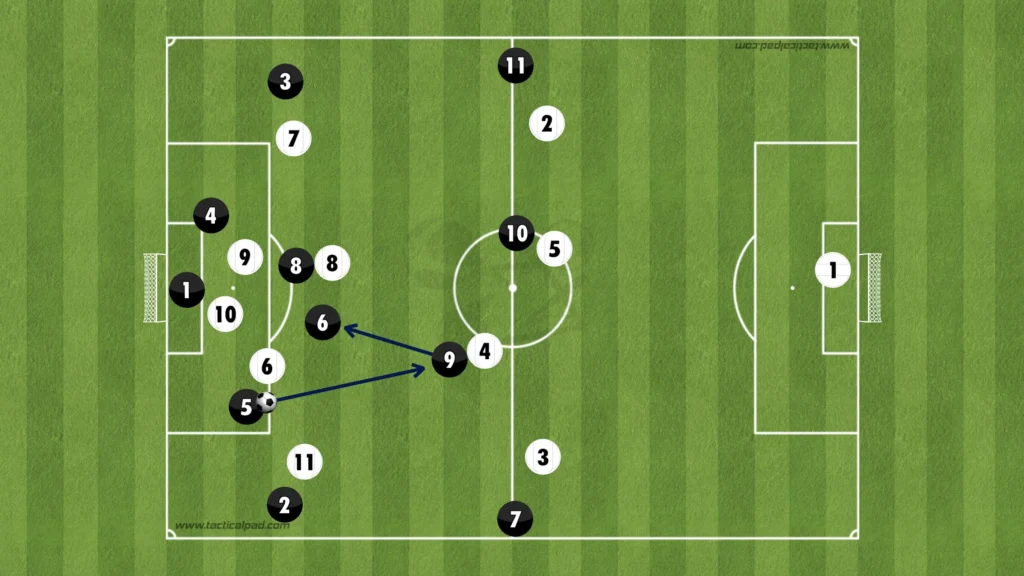
Additionally, the dropping striker can often turn when receiving the ball. The attacking team’s winger can move up when the striker drops, which pins the opposition defenders. When the defenders stay back to control the winger, the striker will be completely open in the space between the opposition’s defense and midfield, allowing him to turn and progress the ball forward when receiving a pass from the backline.
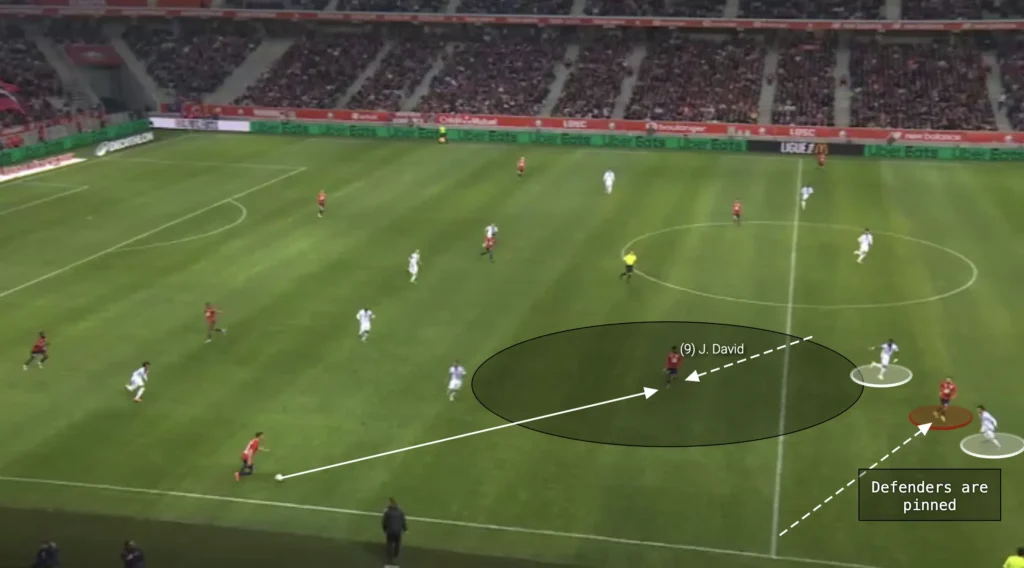
Going long
Building up like this is great in theory but requires massive concentration, training, and technique. One bad pass or bad touch will lead to a certain goal. To avoid that risk, many teams go long when building up against a man-to-man system. The benefit of building in a 1-4-2-4 formation is that it can be manipulated with small movements to open up more space for the attackers, giving more threat to these long balls. If the strikers drop into the midfield from the beginning, the attacking team will be in a 1-4-2-2-2 formation with two number-tens and two high wingers in the low build-up.
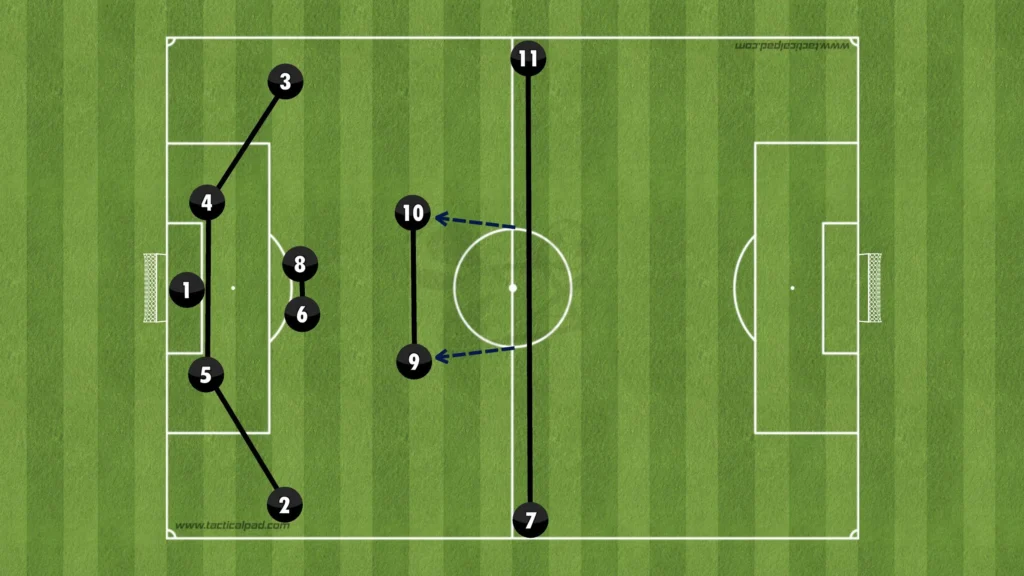
This structure questions the opposition center-backs, forcing them to make difficult decisions. If they push up on the dropping strikers, the space behind them opens up, giving the winger a 1v1 against the fullback in a massive space.
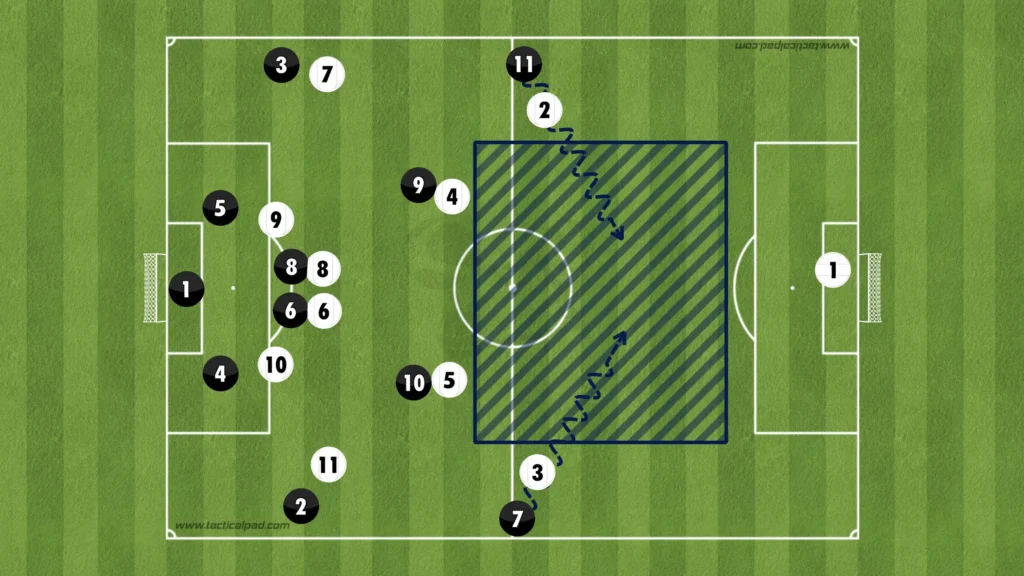
However, if they do not push up, a numerical superiority is created in the midfield, allowing the attacking team to find the strikers and play through the press.
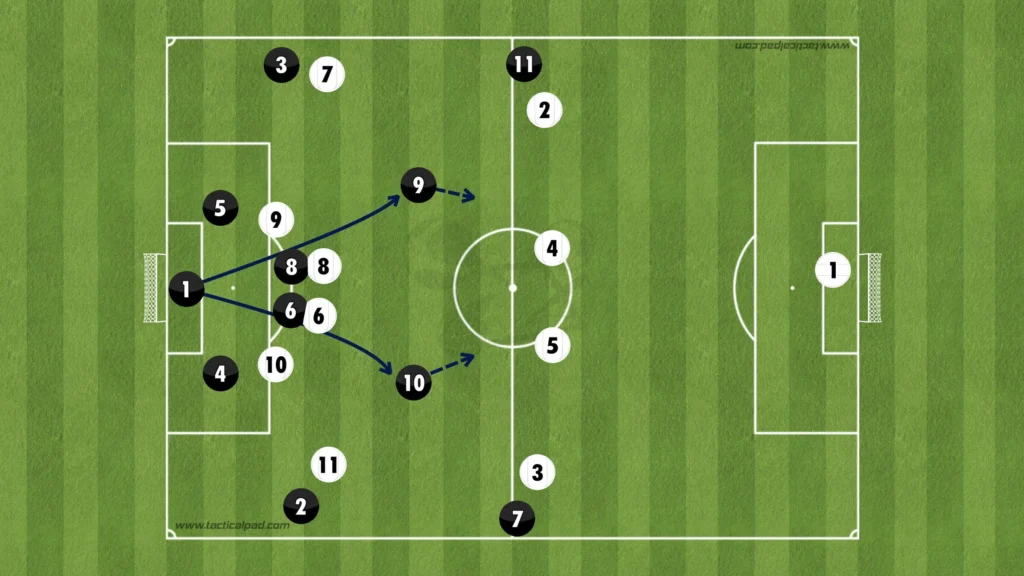
Here, De Zerbi’s Brighton exploits the space in behind by playing a through-ball from the goalkeeper to the winger into the space that Brentford’s pushing center-backs have opened.
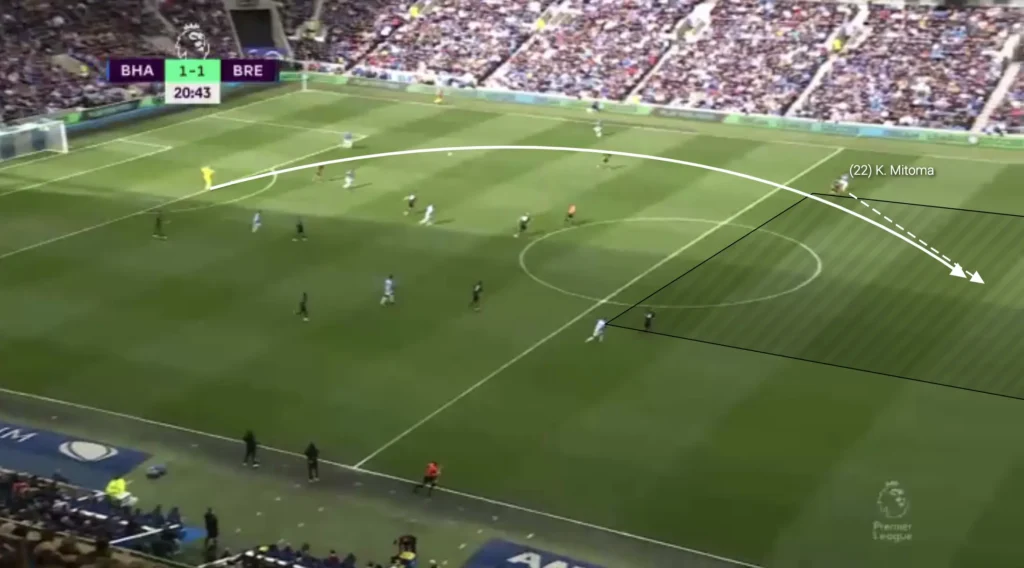
High Build-up
The 1-4-2-4 formation offers much flexibility in the high build-up. The wingers can play high and wide to stretch the opposition’s backline or come inside to create overloads in the middle. A holding midfielder can drop into the backline, allowing the fullbacks to either push up or come into the midfield. The strikers could also make runs in behind or drop into the midfield to create overloads.
Most teams, though, will push the fullbacks up next to the holding midfielders, creating a 1-2-4-4 build-up structure:
Wingers coming in
In the 1-4-2-4 formation, the movement of the wingers plays a crucial role in creating tactical flexibility and attacking options. When wingers invert, they move from their wide positions into central areas. This movement allows them to link up with the strikers, creating overloads in the middle of the pitch.
Additionally, inverting wingers can exploit the half-spaces between the opposition’s fullbacks and center-backs, making them more unpredictable and harder to mark. They will be in these “pockets” of space, referring to the spaces between the opposition’s defensive and midfield lines, where the wingers can receive the ball in more advanced positions. By positioning themselves intelligently in these pockets, the wingers can turn quickly and face the opposition’s goal, creating opportunities for through balls, driving runs, or direct shots.
Numerical Advantage in the Midfield
When the wingers come in, at least four players will be in the midfield, sometimes five if one of the strikers drops. With this, you will almost always have a numerical advantage in the midfield, meaning at least one midfielder will always be open. Having only the two fullbacks out wide and the rest of the players in the middle creates more options in the center and less space between the players. Therefore, 1-4-2-4 teams who invert the wingers should prioritize playing through the middle. There will be one player out wide to pull the opposition apart while the rest create numerical advantages in the midfield areas.
When a team outnumbers the opposition in the midfield, it can more easily retain the ball, exploit spaces, and progress the ball through the center. At the same time, having many players centrally builds good conditions in defensive transitions since it allows more players to counterpress when they lose the ball.
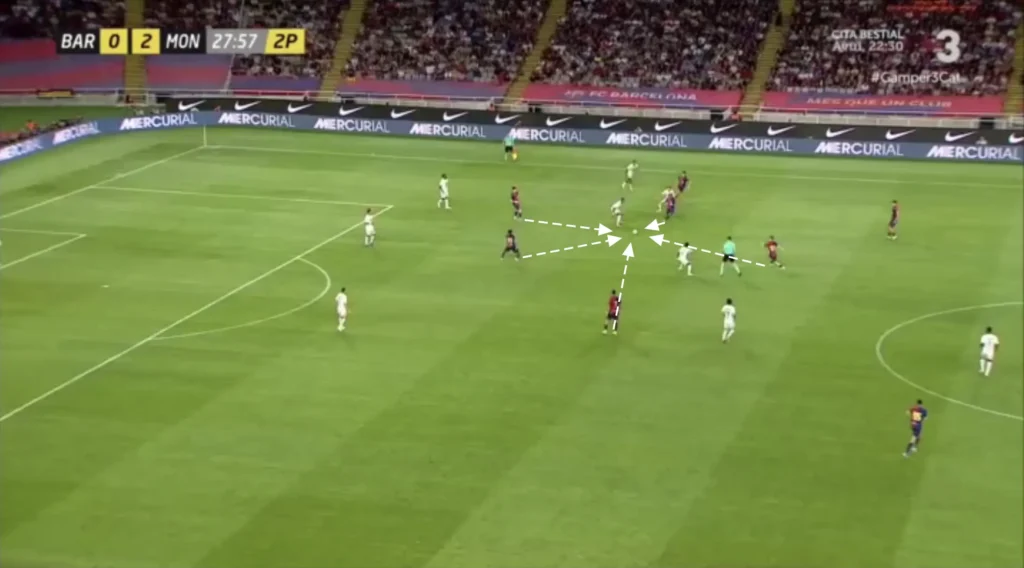
Another purpose for keeping many players in the middle is to shorten the distance between them. This shortens the length of the passes, which naturally shortens the time between passes. This means the opposition players will have less time to push up and press, giving the team in possession more time and control with the ball.
Fullbacks Pushing up
The wingers coming in opens up space on the flanks for the fullbacks to push up, providing width and crossing opportunities.
By pushing up the field, they stretch the opposition’s defensive line, creating more space for the strikers and wingers to operate. This forward movement also forces the opposing wide players to track back, relieving pressure on the holding midfielders and allowing the team to maintain possession in advanced areas. Additionally, fullbacks in this formation often deliver crosses into the box, adding an extra dimension to the attack and increasing the chances of creating goal-scoring opportunities.
Wingers staying wide
In the 1-4-2-4 formation, the wingers can also stay wide, which stretches the opposition’s defense horizontally. By positioning themselves near the touchlines, they force the opposing fullbacks to cover more ground, creating gaps in the defensive line that the central attacking players can exploit. This width also provides valuable crossing opportunities, allowing the wingers to deliver balls into the box for the strikers and advancing midfielders. Additionally, maintaining width helps to open up space in the midfield, giving the team’s playmakers more room to operate and facilitating quicker transitions from defense to attack.
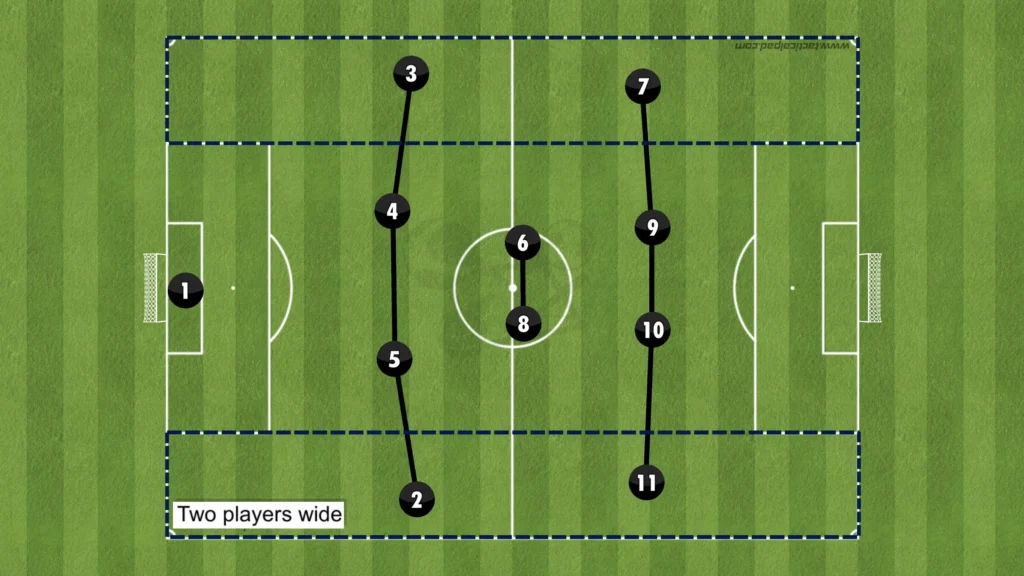
With the wingers wide, the fullbacks will have less freedom to push up. On the one hand, this gives you fewer players high up the pitch, meaning creating goalscoring opportunities could become more difficult. On the other hand, this creates better conditions to defend against counterattacks. When fullbacks stay back, they are better positioned to cover the wide areas, which are often exploited during quick transitions.
2v1 against the opposition fullback
With the wingers staying wide, the attacking team will have two players on the wing. These two can work together to create chances, mainly by overloading the opposition fullback. When the winger gets the ball on the wing, the fullback can quickly make the overlap, creating a 2v1 against the opposition fullback.
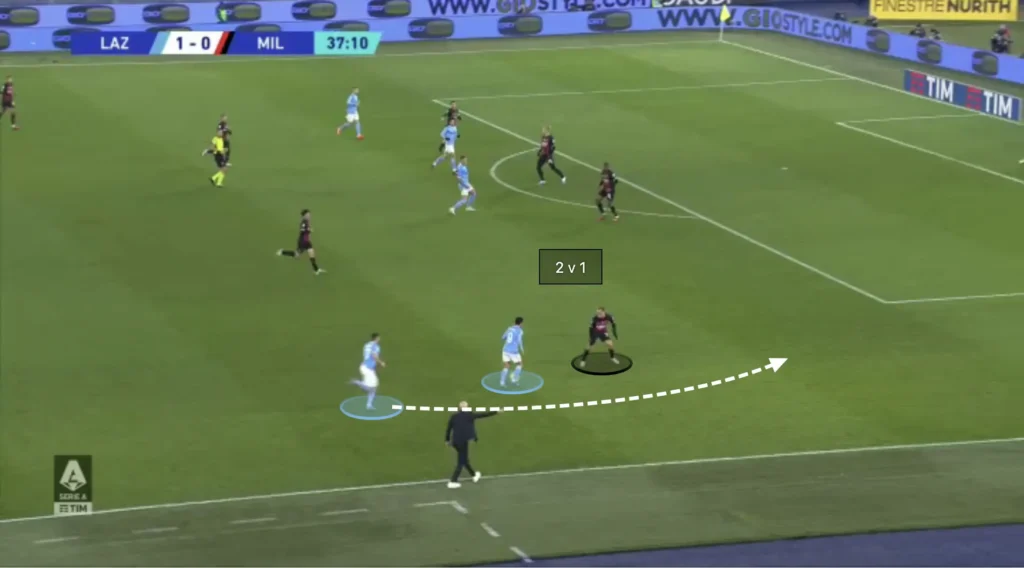
If the defending fullback drops to cover the overlapping run, the winger could cut inside, taking a shot or combining with a midfielder. If the fullback covers the center, the winger can easily play the ball to the overlapping fullback, creating a crossing opportunity.
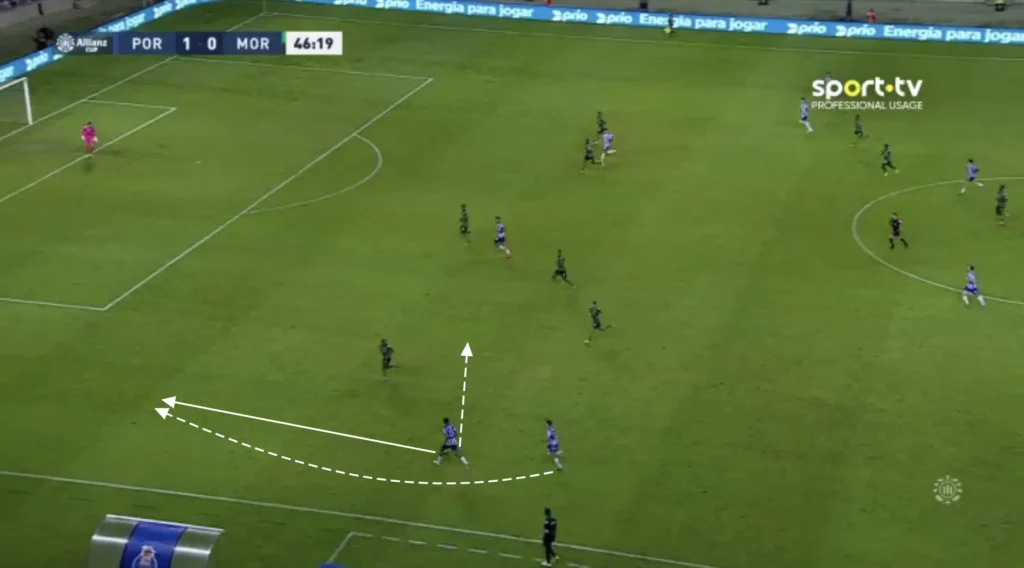
Final Thoughts
The 1-4-2-4 formation is a bold and attacking setup that prioritizes offensive dominance while demanding disciplined defensive transitions. Its success relies on players’ ability to press high, exploit wide areas, and maintain balance in the midfield. While it can overwhelm opponents with attacking numbers, its vulnerabilities in defensive coverage require careful execution and tactical awareness. For teams willing to take risks and maximize their attacking potential, the 1-4-2-4 offers an exciting, high-stakes approach to the game.

